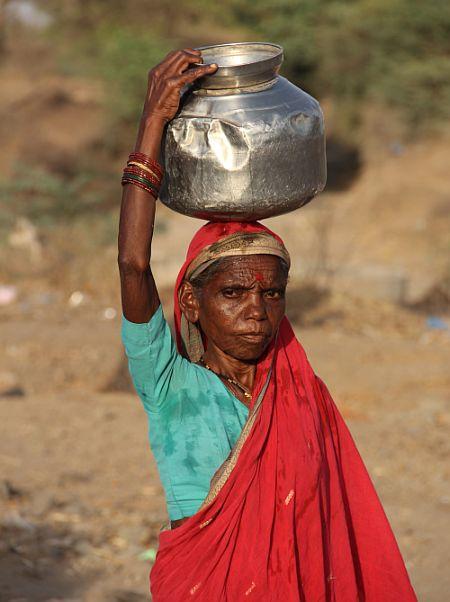
That Maharashtra has been grappling with severe drought is a given now. So when rediff.com's Uttam Ghosh packed his bags and set off for Jalna in the north Marathwada region of the state he expected to come across the usual images.
But instead of a parched landscape, he encountered greenery and chara chavanis (cattle sheds) with well-cared bovines.
Eventually, as he walked around with his camera, Uttam realised that the real villains in the scene lay somewhere else -- in excessive tubewell drilling, in bad crop planning, in deforestation and to a big extent on account of the loans farmers in the area took to get their underage daughters married with hefty dowry.
Click on NEXT to see the struggle for water in Jalna through Uttam's eyes.
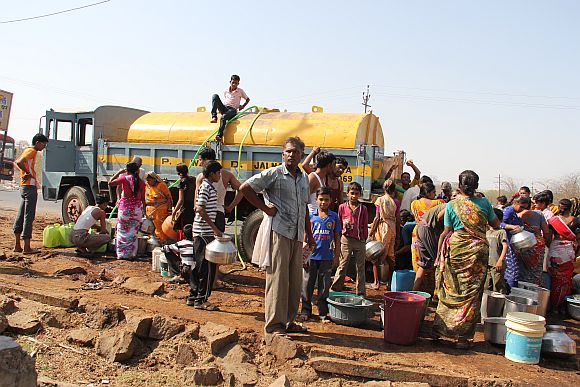
A Public Works Department tanker arrives in a village on the outskirts of Jalna town.
Sheikh Naser Umar, a private tanker operator from Georai village in Jalna owns 2 tankers and makes Rs 1000 per day for five trips.
The water source is 35 km away from Khadakpurna dam.
Umar says there are 500 tankers operating in Jalna.
Click on NEXT to see more PHOTOS...
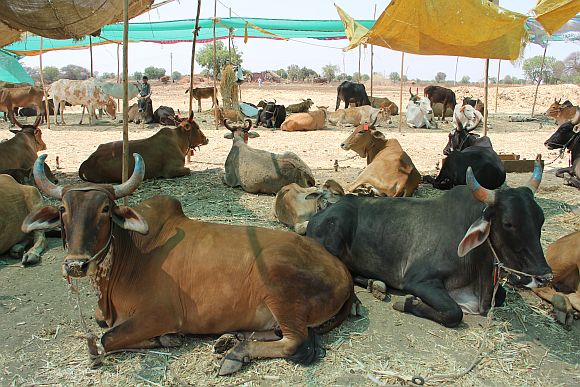
This was one of the many chara chavanis in the Aurangabad-Jalna highway.
The cattle seemed to be well-fed and well looked after.
The Devgiri Nagari Sahakari Pad Sanstha has been managing this chavani in Dongaon village in Jalna since March 25.
They look after 369 cattle, including some from the neighbouring Kaserkheda village. About 300 families own cattle and are landowners in Dongaon. The chavani also tags the cattle and keeps a tab on them everyday.
The fodder for the cattle was earlier being provided by the Sanstha but recently the government decided to provide it free of cost.
Click on NEXT to see more PHOTOS...
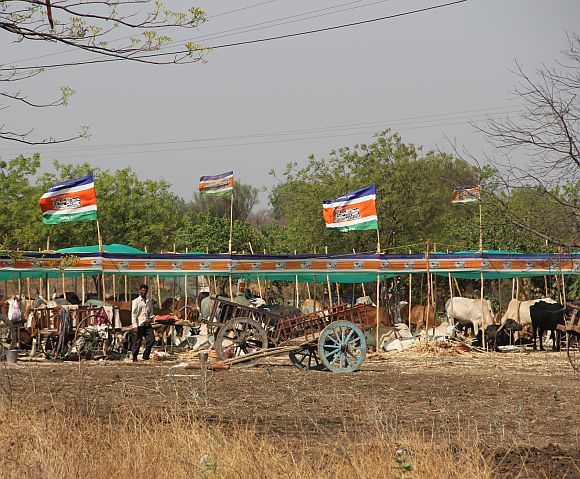
Most villagers feel that the chara chavanis are just a political gimmick by opposition parties.
The chavanis are not present where it is required in the interior villages of Jalna and Beed districts; 50 percent of them are a political gimmick, says Sheikh Naser Umar, a water tanker operator
Click on NEXT to see more PHOTOS...
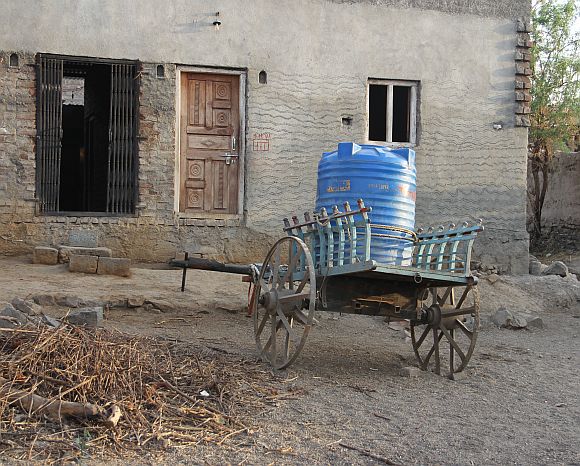
In Rui village in Jalna every home has these blue tanks, locked so that the water is not stolen in the night.
Water is brought from Sukhapuri where the water table is relatively higher considering its proximity to river Godavari. The water is rationed per family every four days.
Click on NEXT to see more PHOTOS...
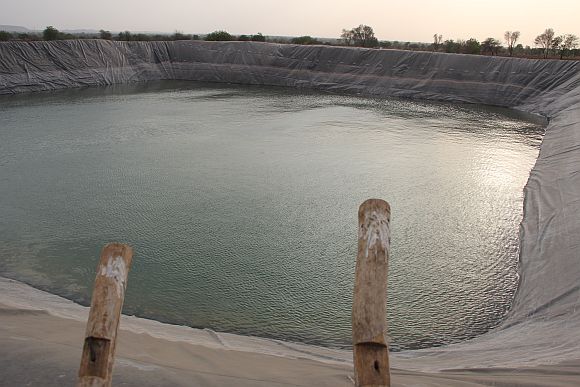
This water storage system is owned by a rich farmer near Talwada village in Beed, one of the severely drought affected areas.
Click on NEXT to see more PHOTOS...
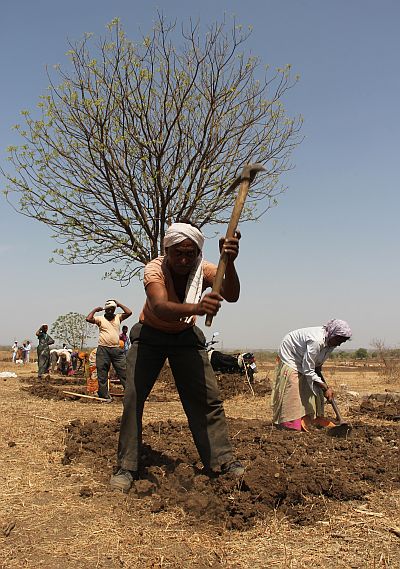
Labourers hired under the Mahatma Gandhi National Rural Employment Guarantee Act are seen working on a farm on the way to Jafrabad, Jalna.
Most landless labourers -- the banjaras and the vadaris (both migrant tribes) who live in thandas (tribal colony) on the outskirts of the villages -- are treated as outcastes. Many have migrated to the cities. Those who chose to stay back, till their fields preparing them for the rains.
"The women get paid Rs 100 a day; my husband gets Rs 50,000 a year," says Vijaymala, a resident of Padalshingi village, Beed.
Click on NEXT to see more PHOTOS...
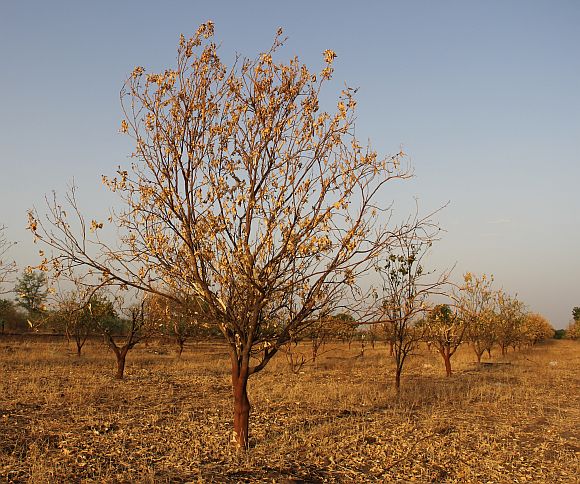
One of the many dried-up trees in a lime orchard in Rui village, Jalna.
Farmers who have the wherewithal to invest in drip cultivation may be able to save their orchards.
The rest probably will curse their misforturne.
Click on NEXT to see more PHOTOS...
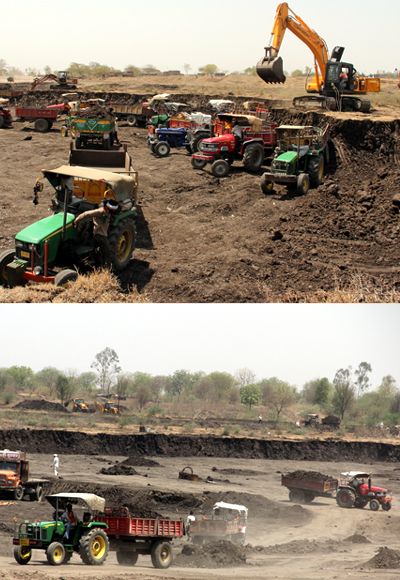
The mud from the 130 acre area around the dried-up Turita Devi Talao dam in Talwada, Beed is being dug up and used to fertilise the soil in 25 villages. As of now only 30 per cent of the dam has been desilted, which has benefited 1000 farmers and 5000 hectares.
Work has been going on here at a fast pace and villagers hope that the rains will fill up the dam and raise the water table in the area.
Laxman Raut, a newspaper vendor and local journalist, says that no rozgar (employment) scheme has been implemented in this circle of 25 villages.
"Even the approach road to this village is bad," he says, adding, "The Godavari is just 5 km away, but we still do not have enough water."
Click on NEXT to see more PHOTOS...

Shops in Talwada though are doing good business, selling BT cotton seeds and fertilizers.
Cotton farms here have dried up due to lack of water.
Haphazard crop planning and the lure of profits from BT cotton (which require a lot of water) have resulted in many farmers facing massive loans
Click on NEXT to see more PHOTOS...
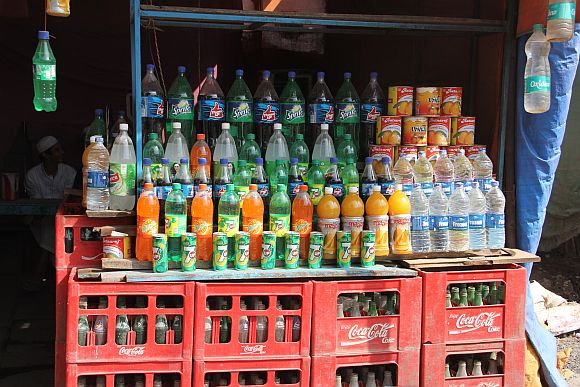
Water may be scarce, but there surely is no shortage of shops selling soft drinks in Jalna and Beed.
Click on NEXT to see more PHOTOS...
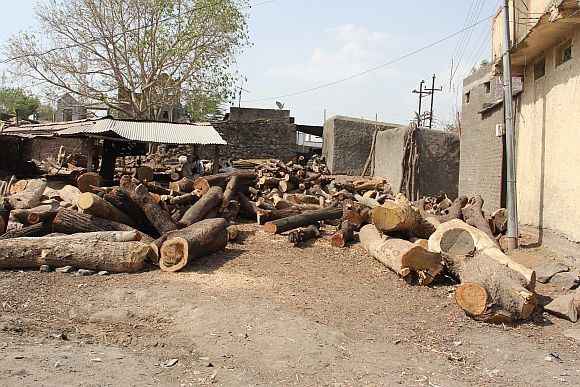
Timber trade has been flourishing in the drought region.
The gram panchayats have been turning a blind eye to rampant deforestation, says Ankush Pawar who hails from Talwada.
Many blame the rampant cutting of trees for the water table going low in the area.
Click on NEXT to see more PHOTOS...
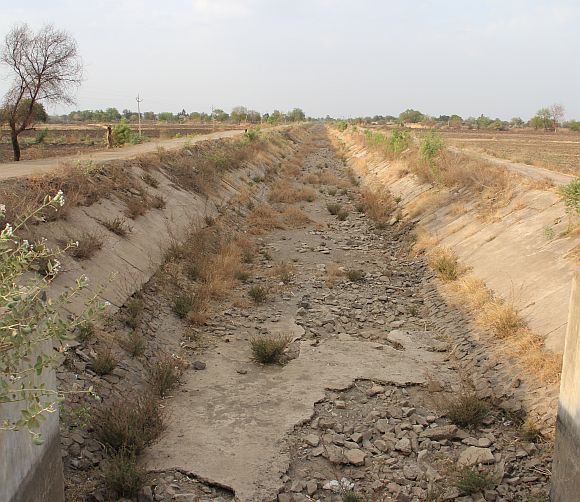
This dried-up canal in Georai Taluka connects to river Godavari five kilometers downstream.
Click on NEXT to see more PHOTOS...
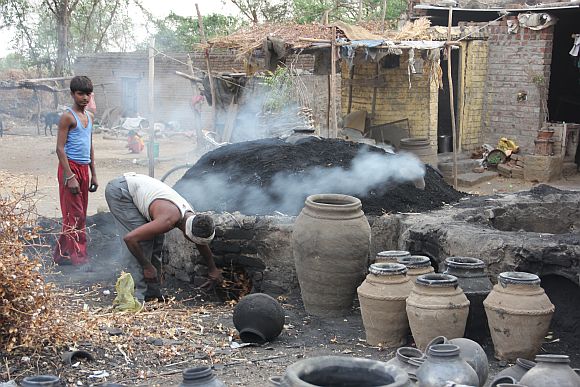
Potter Bandu Mirgudkar, a resident of Bagpimpalgaon in Beed, says that his business has taken a hit as a result of the drought-like conditions.
People do not have enough money to buy pots, he says.
Mirgudkar sells only 10 pots every 3 days as compared to 20 last year.
Click on NEXT to see more PHOTOS...
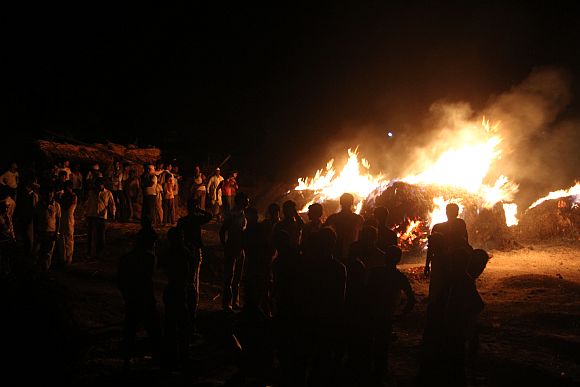
It could be the searing heat that set this mound of fodder in the migrant colony in Dabrul village on fire.
With no water available to douse the fire, the fodder was turned to ashes in no time.
Click on NEXT to see more PHOTOS...
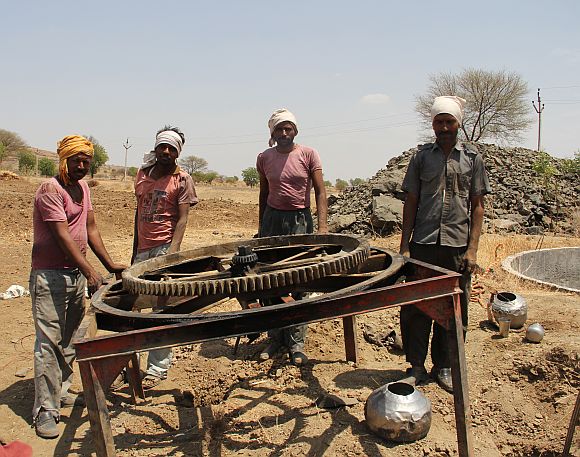
Well drillers Umesh Salve, Punjab Thote, Arun Thote, Digamber Sriram Lakunde and Shivaji Doke take about 15 days to dig a well.
They earn Rs 200 a day. This year, they dug 6 wells.
The local contractor earns about Rs 1.3 lakh from a well. Some of the labourers come from as far as Rajasthan.
Click on NEXT to see more PHOTOS...
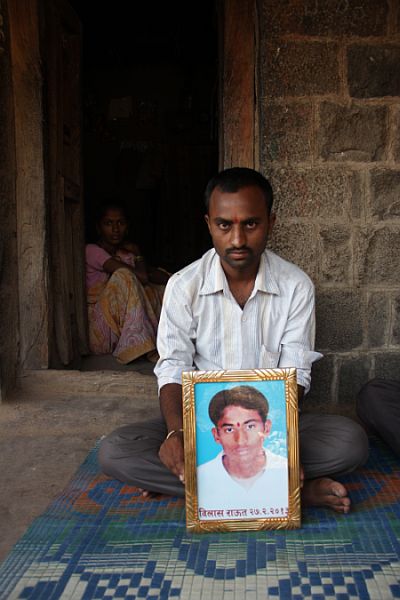
Twenty five-year-old Vilas Namdeorao Raut from Dongaon in Jalna committed suicide on February 22 this year, as he could not manage to repay the loans he had taken on his father's name to cultivate his 3 acres of land with BT cotton.
His brother, Kailash Namdeorao Raut is seen holding his picture.
Click on NEXT to see more PHOTOS...

In Jalna, most girls drop out of school after Class 7.
Dr Rameshwar Rajgude, who runs a nursing school, says that schools do not have toilets for girls and parents do not want to send their daughters to a school far way from the village.
Child marriage is rampant in this region.
Citing the special benefits accorded by the government for couple, people here get their children married at a young age, says Dyanesh, an activist working in the village.
Shankar Shantaram Shinde, a farmer from Talawade who has a son and 3 daughters, says: "Dowry is a major issue here after the karja (loan) we take for farming. We are trapped in this drought-loan-marriage-dowry-loan cycle."
Click on NEXT to see more PHOTOS...
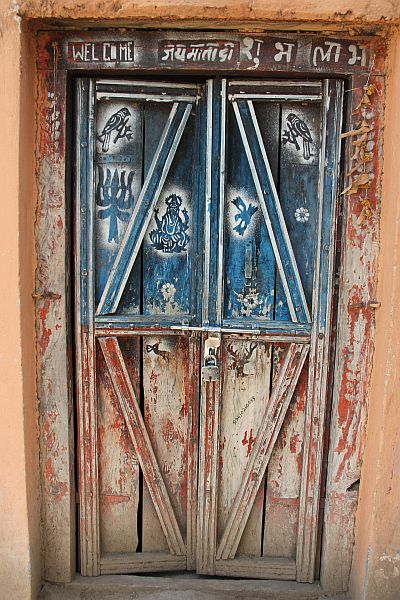
A migrant farmer's locked door
Click on NEXT to see more PHOTOS...
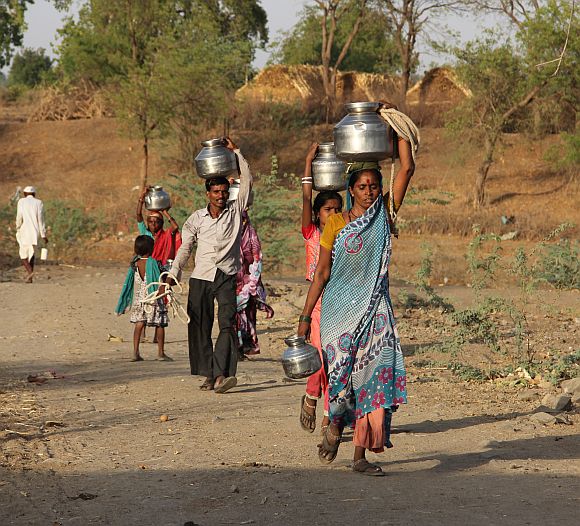
Women and children of Jamvadi village walk over a kilometer to fetch water for their daily needs.
Click on NEXT to see more PHOTOS...

Villagers in Rui last saw government-supplied water in their taps a month back.
Government-sponsored tankers have been providing water thrice a day. Besides, local people also undertake a 2 km walk to fetch water from the gram panchayat.
Tankers fill this cemented well with water. The water vanishes in 15 minutes flat.
Click on NEXT to see more PHOTOS...
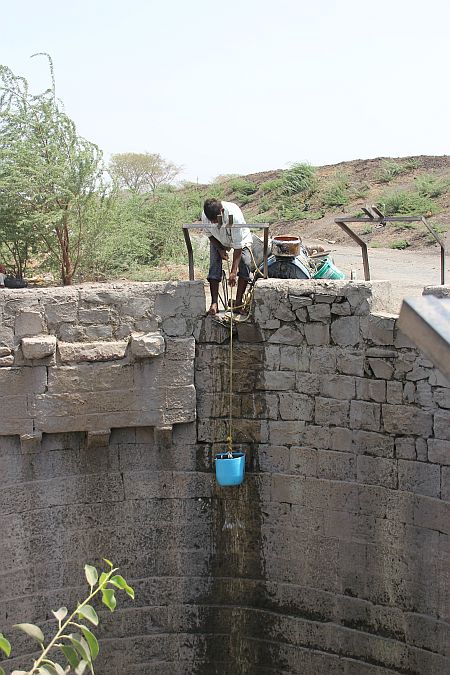
In Talawada, Beed wells have to be dug 60-75 feet deep for water
Click on NEXT to see more PHOTOS...
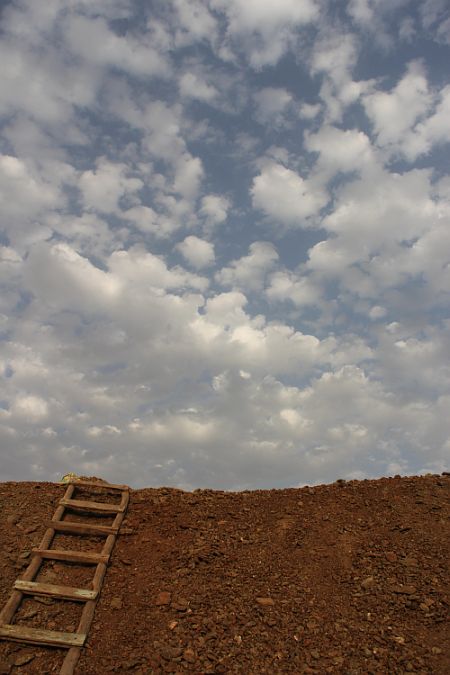
Hopes run high for a positive monsoon.
Click on NEXT to go further...
...